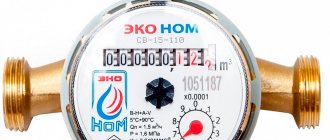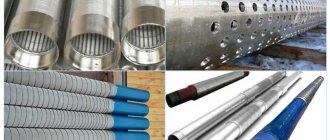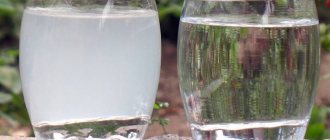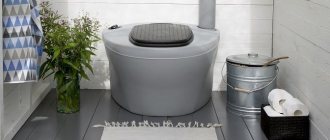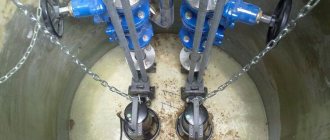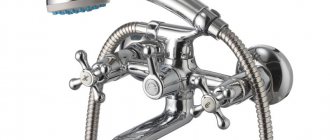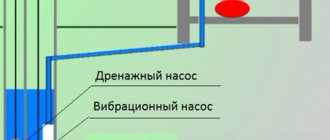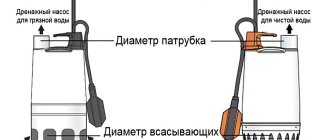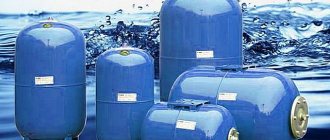The use of various types of filter devices is the main way to obtain clean drinking water, with carbon-based systems being the most common. For a consumer who independently purifies water from a public water main or an individual source of water supply (borehole, well), it is useful to know for effective use what a carbon filter for water cleans, its types and areas of application.
The use of charcoal for water purification has been known since ancient times; even now, in order to save money, craftsmen make similar charcoal purification filters on their own. It is also difficult to imagine modern water purification filters without the presence of carbon fillers; they are used both independently and as part of various types of filter systems.
Activated carbon for water treatment
How does coal help purify water?
Carbon filters for water purification are one of the most commonly used devices. Especially in those regions where, after treatment by treatment facilities, the water still remains of insufficient quality. The working substance in the described filters is activated carbon obtained from coconut shells and hardwood. After heat treatment, the resulting material is mixed with coke and other carbon-rich compounds. This increases the porosity of the working substance, giving it the properties necessary for cleaning, in particular the ability to retain impurities by passing water through it.
Large pores are capable of holding large organic molecules, and small ones, respectively, are capable of holding small particles of all kinds of chemicals.
The activity of coal is assessed by a parameter called the iodine index.
Also, when producing activated carbon, its hardness is taken into account. If this indicator deviates from the norm, then particles of the working substance will enter the liquid that has already been purified.
Activated carbon that meets all standards is placed in flasks and cartridges and used as a filtering agent. It is widely used in everyday life and industry for water purification, as an air filtration element (in hoods), and also in medicine. True, in the latter case, activation occurs according to a slightly different principle.
Description and what it cleanses of
The carbon filter is a highly porous carbon material. A large number of microcells determines the presence of an extensive active surface, each section of which is capable of capturing foreign particles. The basis of carbon filters is carbon concentrate of various origins.
In practice, coals from the following types of raw materials are used :
- wood,
- peat;
- coconut and fruit shells,
- fruit seeds;
- coal.
Sorbents are obtained by carbonization followed by activation.
Most often, carbon concentrates are activated with water vapor.
Depending on the temperature, mode of supply of hot moisture, and other agents that increase absorption capacity, the material acquires different porosity .
After activation is complete, the carbon product is crushed.
Reference. Some sorption filters contain aluminum silicates, zeolites, and their derivatives as absorbers. Such porous materials effectively purify water, but they are not coal.
To purify water, carbon filters with fillers in the following forms :
- Powder;
- Granule;
- Fiber.
Granular sorbents are most often used. They have significant capacity, high porosity, and provide high-speed filtration.
Industrial air carbon filters for degassing, gas purification and odor removal
Particular attention - in terms of air and gas purification - should be paid to such a unit as an industrial carbon air filter, since proper neutralization of pollutants in the age of developed industry is one of the leading factors in preserving the environment, human health and the well-being of future generations.
As mentioned earlier, dry adsorption degassing is used in a wide range of industrial processes: desulfurization, removal of nitrogenous compounds, VOCs, arenes, acid gases, cyanides, dioxins, explosive and fire hazardous gas-air mixtures.
Video presentation of a desulfurizing adsorber for purifying gas emissions
Moreover, selective removal of pollutants from both gases and air is equally effective. The absolute degree of purification makes adsorbers extremely effective destroyers of any industrial odors (and with them, of course, the pollutant that is the source of odors).
When ordering a coal adsorber from PZGO LLC, you can be sure that we will create the most reliable, trouble-free and durable device or complex, the power and efficiency of which will be necessary and sufficient to perform any tasks in the field of industrial deodorization, degassing, gas or air purification .
Features of design and creation of adsorber systems
One of the designs of the adsorption unit manufactured by PZGO LLC. The system includes 2 devices operating alternately: while the first operates in sorption mode, the second is in reserve. After saturation of the sorbent, gas purification is transferred to the second apparatus, while in the first the process of desorption or reloading of depleted coal is carried out. In addition, out of the box the system is equipped with a shell-and-tube type condensing dehydrator (shown in yellow)
For a more visual representation, we display in Table 3 the main technical parameters of industrial carbon filters developed and manufactured at our plant.
| Parameter | Meaning and Explanation |
| Efficiency | The efficiency of adsorption columns or modules is very high, ≈ 99% . The only requirement for reaching the nominal efficiency of the unit and increasing the capacitive life of the sorbent is preliminary dehydration of the gas flow to a humidity of 70% and below |
| Volumes of purified gas or air | From tens of units to hundreds of thousands of cubic meters of medium per hour (from small laboratory models to multi-stage complexes) |
| Temperature range | Our devices are capable of processing contaminated flows with temperatures from +10 to +60 degrees Celsius. We individually manufacture structures capable of working with environments up to +400 °C. Lining the working chamber of the apparatus with thermo-acid-resistant concrete makes it possible to process gases from temperatures up to +600 °C |
| Construction materials | Based on the operating temperature conditions, the devices can be made of polypropylene copolymer (up to +45 °C), carbon or stainless steels |
| Filler | The filler can be, depending on the nature and temperature of the medium being treated, activated carbon, silica gel, zeolite (and other aluminosilicates), as well as synthetic polymer adsorbents, including those with a metallized matrix |
| Pneumatic resistance | ≈ 1000 Pa (the low resistance of the devices has virtually no effect on the overall pressure in the gas-air infrastructure of the production zone/site) |
The carbon filtration complex for emergency neutralization of fuel vapors does not reduce efficiency even when installed outdoors (made at PZGO LLC)
Regeneration of carbon sorbent
One of the features of the use of active carbon is its gradual saturation with captured substances and, as a result, loss of efficiency.
In most household applications, where the cleaning volume is small, the cost of the exhausted media can be neglected and the filter can be replaced with a new one; moreover, the manufacturers themselves almost never provide the possibility of regenerating carbon with their own hands at home.
The situation is different in industry - the volume of sorbent can be calculated in tons and tens of tons per day. Of course, such quantities of waste material are not disposed of as waste - producers strive to increase economic benefits and the coal is reactivated.
Industrial regeneration plant
Regeneration cannot be carried out indefinitely; for coal, the permissible number of regeneration cycles is about 100. After this, the sorbent needs to be completely recycled.
Typically, reactivation procedures involve blowing the substrate with hot steam (under pressure or under normal conditions), blowing with oxygen, inert gases and/or thermal calcination.
Restoration of efficiency / desorption of the adsorbate can be carried out both within the design of the adsorber itself (whose technical design implies the possibility of carrying out regeneration measures), and through third-party companies that transport the substrate to their production lines, carry out desorption, and then return the substrate to the manufacturer.
However, coal containers often last for quite a long time. So, for example, adsorption purification of biogas from hydrogen sulfide can be effectively carried out in a filter for up to several months without any intervention.
Final classification
To summarize, we can make a general classification of carbon filters according to their types of design and areas of use:
- By purpose – household, industrial, agricultural, household/municipal;
- For processing media – liquid (submersible, flow-through), air, gas, combined;
- By mobility – stationary, mobile, individual (wearable);
- According to the physical representation of the active layer - fabrics, impregnations, substrates, cartridges, replaceable sleeves, boxes, chambers with filling / backfilling;
- According to the shape/structure of the working substance - threads, tablets, granules, pellets, briquettes, crumbs, dust;
- By orientation - column (tower), horizontal-modular, combined;
- According to the mobility of the filler (only for industrial applications) – a fixed or moving / fluidized bed (models with a dry fluidized bed are used quite rarely, since the requirements for the capacity of the sorbent are added to the requirements for its mechanical resistance to abrasion).
Order, production, delivery and commissioning of carbon industrial filters in Russia and Eurasia
For any questions regarding the individual development and production of carbon filters for industrial use, please contact us in a way convenient for you or fill out the Customer Questionnaire.
We will quickly produce, deliver and – at the Customer’s request – carry out professional introduction of equipment into the technological cycle of your enterprise. We will train the workforce. Complete kit for quick commissioning. Manufacturer's warranty.
PZGO LLC – breathe easy!
The main purpose of carbon filters
Activated carbon filtration devices solve the following problems:
- They help purify water from unpleasant tastes, foreign odors, unnatural colors, rust, and dirt.
- Remove organic contaminants, the sources of which are harmful microorganisms.
- Helps purify water from residual disinfectants and bleach
Salts, radioactive ions, and bacteria are not removed by coal. Additional accessories will help expand the cleaning range.
What does a carbon water filter clean from?
Using domestic and industrial installations, the following water treatment problems can be effectively solved:
- remove foreign taste - some impurities can make the liquid sweetish or salty;
- get rid of aroma - for example, hydrogen sulfide gives the resource the smell of rotten eggs;
- discolor - in its normal state, the aqueous solution should be completely transparent, not cloudy;
- deal with rust, which often forms inside old metal water pipes;
- remove all organic matter - these are microorganisms hazardous to health, as well as the products of their decay and vital activity, which settle in the form of sludge;
- clean the liquid from impurities of sodium hypochlorite, which is most often used at large municipal water treatment plants as a disinfectant.
Features of use
In order to be able to operate the carbon filter for a long time and obtain water free from harmful elements, you should not forget about some restrictions:
- Monitor the pressure level in the water supply system; it should not be higher than that recommended by the manufacturers (usually 8 atmospheres).
- Pay attention to the operating temperature - indicated on the cartridge label. There are carbon cartridges only for cold water, and there are universal ones - for cold and hot.
- For optimal operation of the filter, the humidity in the room where it is installed should not exceed 70%.
- To prevent coal dust from getting into the purified water, it is recommended to rinse the cartridge for 1-2 minutes before first use.
The principle of operation and why it is better than usual
The operation of carbon filters is based on the attraction of impurities to the surface of the sorbent by forces of weak interaction (adsorption), the reaction of some pollutants with carbon fillers (chemisorption).
High-quality activated carbon exhibits the following properties :
- Actively binds foreign substances and does not react to water molecules;
- Easily wetted with water without being destroyed;
- Does not initiate oxidation reactions or resinization of impurities;
- It has pores with sizes from 0.8 to 5 nm, which allows the penetration of organic pollutants (petroleum products, pesticides, surfactants);
- Has a large capacity for short-term interaction with water.
Loaded filter media must be regenerated by washing .
After a few reductions (up to 4 times), the activity of the coals does not decrease.
Long-term use of the sorbent is not recommended.
For complete restoration you need to activate it. It is almost impossible to do this at home.
Important. Some fillers can only be disposed of along with any water impurities that have accumulated on them.
Carbon filters are used to achieve the following purposes :
- Discoloration of contaminated water;
- Removing unpleasant odor and taste;
- Extraction of organic compounds;
- Isolation of biological impurities from the aquatic environment;
- Fixing products of disinfection (chlorination) of water pipelines on a porous surface.
Coal materials successfully cope with all common pollutants . Their characteristics may not be enough to purify water with high levels of impurities containing high concentrations of hardness salts. In such situations, in addition to carbon filters, it is necessary to install additional cleaning modules.
Carbon filters are more effective than any conventional mechanical purifier, but are less effective at removing contaminants than reverse osmosis and ultrafiltration systems.
How the filter works
The principle of operation of this type of filter is the adsorption process, which is based on the attraction of particles to the sorbing surface using forces with weak interaction. Also a chemisorption process in which certain pollutants react with carbon-type fillers.
Properties of activated carbon:
1.fixes foreign particles without interacting with water.
2.charcoal gets wet easily, but does not collapse.
3.does not oxidize, does not convert impurities into resin.
4.pores have sizes ranging from 0.8 to 5 Nm, therefore they purify water from petroleum products, pesticides, and surfactants.
5.Different in capacity even if it interacts with water for a short time.
Attention! Filters with bulk media are regenerated by washing.
If you restore the filter four times, its activity does not decrease.
The use of the sorbent over a long period is not recommended.
To fully restore productivity, activation is carried out. This cannot be done at home.
Attention! In some cases, fillers cannot be restored; they are disposed of with dirt deposits adhering to them.
When is it advisable to use carbon-based filters:
1.to decolorize contaminated water.
2.remove odor and taste.
3.to extract organic compounds.
4. identify biological impurities.
5.to fix chlorination products on the surface of the material, that is, after disinfection of water pipes.
Charcoal removes many types of pollutants. They may not be able to cope with liquids containing a high level of hardness salt concentration or a large volume of impurities. In this situation, special cleaning modules should be installed along with the filters.
Unlike mechanical purifiers, carbon filters are very effective, but they are inferior to systems based on reverse osmosis and ultrafiltration.
Pros and cons of using carbon filters
The use of activated carbon for water purification is now widespread, since the sorbing element is capable of eliminating even minor contaminants and small amounts of impurities in the liquid coming from the well.
The advantages of using a carbon water filter include:
- Efficiency. Elimination of almost all mechanical contaminants, organic compounds, including chlorine and benzene;
- Resumption of operation of the filtration element occurs quite quickly, it takes up to thirty minutes;
- Neutralization of unpleasant odor and taste of water after water purification with coal;
- Ease of use.
Types of carbon filters for hoods
The design of filter elements for hoods can differ significantly. They can have different shapes, sizes and devices. Before giving preference to a specific option, it is worth getting acquainted with the existing ones.
Manufacturers offer products of different sizes and shapes PHOTO: dekoriko.ru
Earbuds
Such products are a piece of synthetic fabric impregnated with activated carbon. Used primarily for rough cleaning. They cope with the task quite effectively.
The filter material is impregnated with activated carbon PHOTO: mmedia.ozone.ru
Cassette
Carbon cassette filters consist of plastic disposable cassettes of a certain shape, inside of which there is absorbent material. It can be in the form of powder or granules. Thanks to this design, cassette filter elements are able to provide fine air purification.
The sorption material is located inside the plastic case PHOTO: 1.allegroimg.com
Combined
Carbon filters of this type consist of two flat layers: synthetic fiber and activated carbon granules, which act as a sorbent. Sintepon is the bottom layer. It absorbs fat, and the top one is used to deactivate harmful gas impurities.
Attention! The service life of such products with daily use does not exceed three months.
Combined ones require step-by-step cleaning PHOTO: kitchen-planet.ru
What filters use carbon in their composition?
When purifying water to potable condition, the following factors are taken into account. Typically, chlorinated water is supplied to apartments by public utilities, and the amount of harmful elements it contains is standardized. To combat chlorine and metal salts, if water is used for drinking purposes, you can use ineffective options for settling or boiling water.
But considering that carbon filters do an excellent job with bleach, their use in this case will bring a more pronounced effect and save time on dechlorination. Therefore, for water purification only for drinking purposes from public water mains, most consumers use small-volume carbon-containing filters.
If an autonomous water supply from boreholes or borehole sources is organized on an individual site, other filtration systems will be needed. Often water enters a house from shallow water layers, which include wells or Abyssinian wells. In this case, there is a high probability that contaminated surface water, various types of microorganisms and microbes, and organic impurities will enter the water basin, while the water itself usually contains a small amount of metal salts, which give it hardness and impair color and taste.
In this case, the use of water purification carbon-containing filters not only for drinking purposes, but also for domestic use, is the optimal solution, and many users install large-volume containers with coal for purification work.
A carbon filter for water purification, if an artesian source with clean water is used on an individual site, usually containing only a high content of metal salts from harmful elements, is not so necessary. In treatment systems for artesian wells, installations are mainly used for iron removal, and carbon filtration is used for post-treatment.
Jug filter cartridge Barrier - device
Jugs
The simplest and most popular type of water purification filters for public water supply networks at home is a device in the form of a jug with a replaceable cartridge. According to user reviews, the sorption cartridge in a pitcher-type filter in urban water supply conditions is usually enough to provide a family of three people with water suitable for drinking purposes for a month.
The filling of cartridges from different manufacturers may differ not only in composition, but also in the quantitative ratio of various components.
Most cartridges from well-known manufacturers (Aquaphor, Brita, Barrier, New Key) are filled with activated carbon obtained from burnt coconut, beads with ionic silver are added to fight microbes, and ion-exchange resin is used to soften the water.
Note: Thus, household pitcher filters clean water from chlorine, partially remove metal salts and adsorb insoluble particles of other pollutants.
Flow-through
A flow-through carbon filter is installed in the cold water main as an attachment on the faucet, under the sink in the pipeline, or used in a separate jug with an outlet spout (Spring) connected to the cold water main. The composition of these cartridges is slightly different from jug modifications, since water is supplied under pressure, the productivity of such systems and the degree of purification are slightly higher than that of gravity-flow devices.
Trunk
Reusable carbon-containing filters of the main type are installed in individual water supply systems of private houses. Structurally, they are made in a glass-shaped body, inside of which a tubular cartridge with filler is placed. The housing is hermetically sealed with a threaded lid and a gasket, which has two holes at the top for connection to the water main.
Water enters the filter through the inlet and, after cleaning, is sent to the consumer. At the bottom of the glass there is a tap for backwashing the carbon filler of the cartridge from contaminants.
Main carbon cartridge - design
Reverse osmosis plants
The principle of water purification in reverse osmosis systems (popular brands of such installations are Bosfor, Agua, Geyser, Barrier, Atoll) consists of supplying liquid through a thin-walled membrane with ultra-small pores under pressure, resulting in distilled water without metal salts at the output, which cannot be achieved in any one of the carbon filters reviewed.
For the reverse osmosis installation to operate effectively, the maximum purified water must be supplied to the membrane inlet; therefore, in a standard system, three flow filters are used for its purification, two of which have activated carbon as the main component.
The following types of carbon-containing filter fillers are used in reverse osmation installations:
Granular activated carbon (GAC) . Made from burnt coconut shells, the component effectively purifies water from organics, pesticides, chlorine contaminants, viral and bacterial organisms, and removes foreign odors. The useful area of 1 g of this substance reaches 1000 square meters.
Granular carbon with KDF (GAC-KDF) . The additional presence of KDF components in the backfill makes it possible to effectively remove from water, in addition to biological, hydrogen sulfide, pesticide, phenolic, and benzene contaminants, also heavy mercury, cadmium, lead, and ferrous metal salts.
Pressed activated carbon from coconuts SBC (carbon block) . Compressed high-quality carbon is a sorption filter that perfectly removes organic matter, chlorine compounds, petroleum products, and pesticides from flowing water. After cleaning, foreign odors are eliminated and the taste of water is improved.
Balloon type
Carbon filters of significant volumes are used for water purification on an industrial scale and in public utilities for a large number of consumers. Their main structural element is a container with a lid made of food-grade high-density polyethylene and fiberglass.
The lid contains connections for inlet and outlet of filtered water, a drainage pipe, as well as a control unit that automatically sets operating modes for cleaning the system, which allows you to restore the original state of the carbon filler. The backfill consists of activated carbon and a gravel substrate of purified and etched quartz with a fraction size of 2 - 5 mm, the purpose of the gravel is to uniformly distribute the water flow.
When the sorption filter is operating, water enters the container through the inlet pipe and passes through the activated carbon filler from top to bottom, then it enters a water-lifting pipe with a filter basket at the end, lowered into the gravel backfill, and is sent along it to the consumer through the outlet pipe in the lid.
In the flushing mode, water with high pressure is supplied in the opposite direction: through the water-lifting pipe down through the filter basket and gravel backfill, agitates the layer of activated carbon and is discharged out through the drainage pipe. At the end of backwashing, the loosened layer of activated carbon is compacted by direct washing, passing water for a short time at high speed from top to bottom and discharging it into the drain. Thanks to washing procedures, the resource of the coal bed in sorption filters reaches one to two years.
Design of a balloon carbon filter
Homemade
To save money, many consumers of water resources make a simple, effective carbon water filter with their own hands using technology developed many centuries ago on different continents. To do this, a slot is made at the top of a 6-liter bottle to fill in the filter components, a number of small holes are drilled in the cork and closed from the inside with cotton pads.
Then crushed activated charcoal (obtained by steaming burnt raw materials), its larger fractions, and fine and coarse-grained river sand are poured into the bottle. A water bottle with a carbon filter can be useful on a long hike if you need to collect contaminated, cloudy water from a stream or other source, then filter and boil it.
2.Filters in the form of attachments for the faucet.
Some people prefer faucet-style filters. The devices are easy to install or dismantle and save space under the sink. Filter attachments are convenient for travel. The installation purifies not very dirty water, its supply speed is reduced.
Additional components of carbon filters
In addition to activated carbon, the following additional components are often used in filters:
Synthetic fibers . Synthetic materials are used in filter cartridges as elements of mechanical water purification (discs at the cartridge inlet) from large insoluble impurities, preventing their penetration into the coal mass and clogging its channels. Also, filters made of synthetic porous materials are placed at the outlet of the cartridges for post-treatment, retaining the backfill and preventing it from getting into the water.
In some filter systems (Aquaphor), the carbon bed is mixed with synthetic fibers, which compact its structure and maintain its shape. As a result, a dense mass of activated carbon more effectively purifies the water flow from harmful impurities.
Zeolites are natural minerals, hydrated calcium and sodium aluminosilicates, resembling cloudy glass or mother of pearl in appearance, known for their ability to absorb and release water depending on environmental conditions. Another distinctive feature of zeolites is the ability for cation and ion exchange by absorbing and releasing various substances with its surface structure.
Shungite is a rock of the Precambrian period, consisting of 99% carbon, with a structure very similar to graphite. The mineral has been known since ancient times as an excellent natural water purifier; in the times of Peter the Great, shungite water sources were credited with miraculous healing properties, and soldiers were recommended to carry shungite stone with them on campaigns and purify water with it. Currently, shungite is known as a mineral with high absorbent (sorption) and catalytic properties, and it is also an excellent antioxidant.
Ion exchange resin is used to soften water; in appearance it resembles small fish eggs with a diameter of no more than 1 mm in brown, yellow, and dark colors. The resin exchanges ions with salts of water-soluble metal oxides (calcium, magnesium, iron, manganese), as a result of which they adhere to the surface of the round granules. When sodium chloride (NaCl) salts are added to water, a regeneration process occurs; harmful metal salts are separated from the surface of the ion-exchange resin beads and washed down the drain.
Antibacterial additives. To combat the proliferation of microbes and bacteria and disinfect water, silver ions in the form of small gray balls are often added to carbon filters.
Quartz fine-grained gravel . It is used as a supporting backfill, allowing the flow to flow evenly when the purified water passes through the coal layer, and is used in large-sized carbon-containing systems for purifying large volumes of water.
High purity zinc and copper . These substances are part of one of the latest patented innovative developments - the KDF (Kinetic Degreadation Fluxion) filter bed, which has a higher productivity and degree of water purification from harmful impurities in comparison with traditional fillers. In addition to metals, KDF contains activated carbon and ion exchange resins.
Option for filling jug cartridges
How to choose?
There are several main types of carbon filters. Each device has certain capabilities and advantages. Carbon filters differ in price, which is also important for consumers.
Jugs
The simplest model looks like a container with a larger or smaller volume. A cartridge with carbon filler is built into the lid. The resource of jugs allows you to satisfy the moderate needs of one or two people .
Attention. The purified water in the jug is constantly in contact with the sorbent, so you need to carefully monitor the condition of the filter.
Filled coal becomes a source of pollution. The capacity of the cartridge lasts for a maximum of 2 months, after which it needs to be replaced. The price of filter jugs is low, approaching 600 rubles.
Faucet attachments
Many consumers like faucet attachments. They do not take up space under the sink or on the countertop and are easy to install and dismantle. You can take the nozzle with you on trips. It purifies water from small contaminants and significantly reduces the flow rate.
The absorption capacity of the nozzle usually lasts for 3 months , after which the filter filler must be changed. The price of the nozzle is 2 times less than the jug - about 250-300 rubles.
Flow devices with cartridges
Greater cleaning efficiency is provided by flow-through models under the sink with carbon sorbents. The filter cartridge can be permanently installed in the flask separately , as the only cleaning module or in combination with other units. Flow-through carbon water filters cost much more than jugs and nozzles; the price is close to 5,000 rubles.
Cylinders with sorbents
To purify water from individual sources in suburban areas, large volumes of absorbers are needed. For this purpose, stationary cylinder models with filled coal are used. They are usually installed on main inlet pipes .
The unit is large in size and is necessary to provide clean water to residents of cottages that do not have a centralized water supply. An additional convenience of the cylinders is that you can choose the sorbent for filling yourself, depending on the water quality in the area.
The price of a cylinder with a volume of about 30 liters (without filling) is close to 3 thousand rubles.
Reverse osmosis elements
The use of devices for water purification through membranes according to the principle of reverse osmosis is one of the most effective and expensive options for completely removing contaminants .
A pre-cleaned flow must reach the membrane. To do this, a conventional mechanical filter is sequentially installed in the complex, then a module with carbon, and only after that a reverse osmosis unit.
Important. The resulting water does not contain any particles at all, which is not always good.
Often there is a lack of microelements, a mineralizer is introduced into the complex, adding the necessary salts to the liquid. The price of the unit is approaching 10 thousand rubles.
All types of carbon filters are produced by leading manufacturers of water purification devices:
- Geyser>;
- Aquafilter;
- Aquaphor;
- Barrier>;
- Fibos;
- Honeywell;
- OMOIKIRI.
The choice of sorbent must be approached carefully because the quality of the resulting water depends on it.
Sorption systems
They are more functional; they are a container with absorbent bulk substances inside. When used, simultaneous purification from impurities, chlorine-containing compounds and microorganisms occurs.
According to their design, carbon filters of this type are divided into:
- Flasks without filler. In them, the user will be able to pour granules himself, change the filling and its quantity, the particle fraction depending on the quality of the original resource.
- Collection container with replaceable cartridge. It needs to be changed accordingly. As a rule, the service life at average water consumption is six months.
The option is more suitable for constant use and thus allows you not to think about frequent replacement of the sorbent.
Stationary filtration systems
Ideal for cleaning from chlorine-containing compounds. The unit is mounted under the sink, from where a separate thin tap is connected to the work area. Thus, when you need to use a water supply for drinking or cooking, they use it, and for other purposes, for example, washing dishes, they use a classic mixer.
Flaws
The main negative point that all researchers highlight is partial demineralization. It lies in the fact that, along with harmful impurities, healthy, even essential minerals are removed from the aqueous solution, including a number of salts. But this rule is more applicable not so much to household jugs or nozzles, but to a variety of reverse osmosis equipment.
And the second nuance of operation is that the sorbent cannot completely prevent the entry of bacteria and viruses. In order not to become infected with anything, pre-treatment with ultraviolet light, ozonation or chlorination is still necessary.
How long does the system last?
The service life of activated carbon for water purification depends on the condition and quality of the water in the well, as well as the amount of liquid that passes through the absorbent element in the system daily.
Includes a filter for a well with a capacity of up to five hundred liters of water. And most often it lasts up to six months, after which it is recommended to change the system to prevent a decrease in the quality of the incoming water and leaching of coal. But automatic systems can last up to two years.
How to change filters?
It is important to periodically replace the carbon in the water filter. This is quite simple to do, and the procedure takes up to half an hour, after which you can resume the water supply from the well to the house.
To replace the cartridge, follow the instructions:
- Shut off the water supply to the house. To do this, you need to turn the corresponding tap connecting the well to the water supply.
- After releasing the pressure, unscrew the bottom valve. This can be done using a small tap that comes with the filtration system.
- Remove the old cartridge and empty the accumulated water from the container. It is better to replace the seals too, but if they are still in good condition, you can simply wash them.
- Install a new cartridge and screw the container back on.
- Start the water supply, making sure it is working properly.
Do not forget to change the carbon filter for purifying your well water to keep the water in good condition and completely safe to consume and use raw.
To select a filtration system, you should first take into account the initial state of the liquid, for evaluation of which you can submit it for testing to a laboratory.
How to increase system lifespan
With proper care of the coarse water filter for a well, you can artificially extend the life of the system, which will allow you to change the cartridges in the system not once every 6 months, but once a year. This will save time on changing the system and money.
Proper filter care consists of following the recommendations:
- Use the carbon system only to purify cold and warm water, as the hot pressure can damage it;
- Check that the water pressure matches the value specified by the manufacturer;
- The filter should drain into the drainage system, which will allow access to dirty water during backwashing;
- Install the system in a place convenient for you so that you can quickly replace cartridges or wash the rubber seals if necessary.
Following these tips will extend the life of your filtration system, making it easier for you to access and maintain. And this will accordingly increase the quality and condition of the water entering the house through the water supply system.
How does a carbon filter work?
Despite the variety of options, they all follow the same filtering principle. There is a certain container (larger or smaller) in which the bulk sorbent is concentrated and the distribution cylinder is located. Water passes through this layer, inside which all contaminants remain - impurities, organic substances.
AMETHYST - 02 M Residential building for up to 10 people or up to 2 cubic meters/day.
Aeration unit AS-1054 VO-90
Main table dispenser AquaPro 919H/RO (hot and cold water)
If there is a cleaning function, backwashing is performed. This does not require additional reagents; it is enough to just direct the flow in the other direction to “wash out” the coal sand and contaminants.
Filter maintenance
Modern filter designs do not require complex maintenance during operation.
Filter cartridges are easy to change yourself. Using the key included in the kit, unscrew the cover, remove the cartridge and install a new one.
Next, install the cover in place.
Attention! If the filter's service life has expired, it must not be used.
The effective cleaning period is affected by the load on the sorbent material. As a rule, the carbon filter with water consumption for three people is replaced every month.
Signs of poor cleaning:
1.water acquires an unpleasant aftertaste.
2. the water flow rate decreases, this symptom is inherent in all types of filters, with the exception of the jug.
3. A sediment appears during boiling.
Modern filter models have automatic indication of system operation, which will determine the replacement period. Filters with such a device cost at least fifteen thousand rubles.
There is a way to check the filter. A drop of potassium permanganate is added to the water for a slight coloration and passed through a filter. If the water comes out colored, it is worth changing the filler or cartridge.
The carbon contained in the cylinder can be washed. To restore the ability to clean, the contents are removed and washed many times with water; once you can wash them in a three percent solution of soda and water. The coal is shaken, washed, and mixed at the same time.
How to replace a cartridge?
The sequence of actions will be as follows:
- The water supply tap is turned off.
- Using the included key, the lower part of the filter is unscrewed.
- The old cartridge is pulled out, the rubber seal is washed or replaced with a new one.
- The remaining water in the flask is poured out, and the flask itself is washed without using household chemicals.
- A new cartridge is installed.
- The flask is twisted manually, without the help of a key. The key is for unwinding only.
- Water supply is restored. Don’t forget to check how well the cleaning system works after the replacement.
Types of filters used
Structurally, devices are divided into several types:
- Flow-through. Its main difference is the absence of a storage device. Quite popular in private use; usually a two-stage filter is used in kitchens. The first stage is intended for mechanical purification of the liquid (removing sand and rust), the second is finer filtration and getting rid of organic matter. It is worth noting that this installation cannot be used to filter water in large quantities, since it has a rather low throughput.
- Sorption or mainline carbon filter for water. With its help, cleaning is carried out from mechanical contaminants, bacteria and chlorine. Structurally, it represents an elongated plastic flask with absorbent material inside it. The main carbon filter for water comes with both a filler, which you can easily change yourself and select the necessary sorbent, as well as prefabricated systems - they include a periodically replaced cartridge.
- Stationary or reverse osmosis filter. Effectively eliminates chlorine impurities, it is a cleaning system; a separate tap is installed after the carbon filter.
- Nozzles They do not work as efficiently as previous models; they are used only to delay large contaminants. It is a structure mounted on a crane.
When choosing a filtration installation, it is necessary to take into account many parameters, including the general contamination of the liquid, the number of users of the water supply, and its purpose.
How to make a filter device with your own hands?
You can make a filter device yourself. To do this you need to do the following :
- Take two plastic bottles or small containers;
- Cut off the bottom and remove the lids;
- Place one container on top for filtering, the other on the bottom for storing clean water;
- Wrap the connection point with fixing tape;
- Pour activated charcoal or charcoal into the upper container.
The structure is ready. Water, seeping through the pores of the coal along the entire height of the column, flows through the neck into the lower container.
Reference. Activated carbon can be purchased at a pharmacy. Charcoal is purchased in special stores.
You can make charcoal yourself by burning wood with limited air access. It is appropriate to use a self-made filter at the dacha or on a hike.

